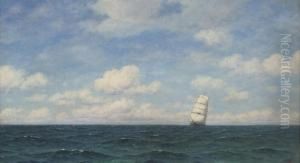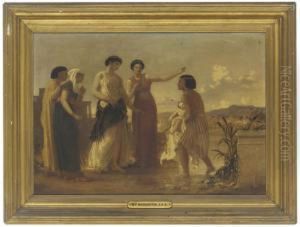William Frederick Woodington Paintings
William Frederick Woodington was an English sculptor and painter, born in 1806 in London. He was a significant figure in the Victorian era of British art and is known for his contribution to public sculptures and medals. Woodington was educated at the Royal Academy Schools starting in 1822, where he was a student of sculptor Sir Francis Legatt Chantrey, one of the leading sculptors of the day.
Woodington's works were primarily in the neoclassical style, which was prevalent during his time. He created a number of public monuments and statues, as well as portrait busts and medals. One of his most notable works is the bronze group 'Asia' at the Albert Memorial in Kensington Gardens, London. This work forms part of the elaborate scheme of decoration that celebrates the achievements of Prince Albert and the Victorian British Empire.
Aside from public monuments, Woodington also produced a series of watercolors, some of which were exhibited at the Royal Academy. His artistic output included historical and allegorical figures, as well as designs for coins and medals. In 1837, he won a competition to design a new medal for the Royal Academy of Arts, which was then struck by the Royal Mint.
Throughout his career, Woodington exhibited frequently at the Royal Academy and was well respected by his peers. His works are characterized by their detailed execution and classical inspiration. Despite the quality of his work, Woodington has not maintained the same level of recognition as some of his contemporaries.
William Frederick Woodington passed away in 1893, leaving behind a legacy of work that contributes to our understanding of Victorian art and the role of sculpture in the public realm during the 19th century. His works remain in various collections and continue to be studied for their craftsmanship and historical significance.






